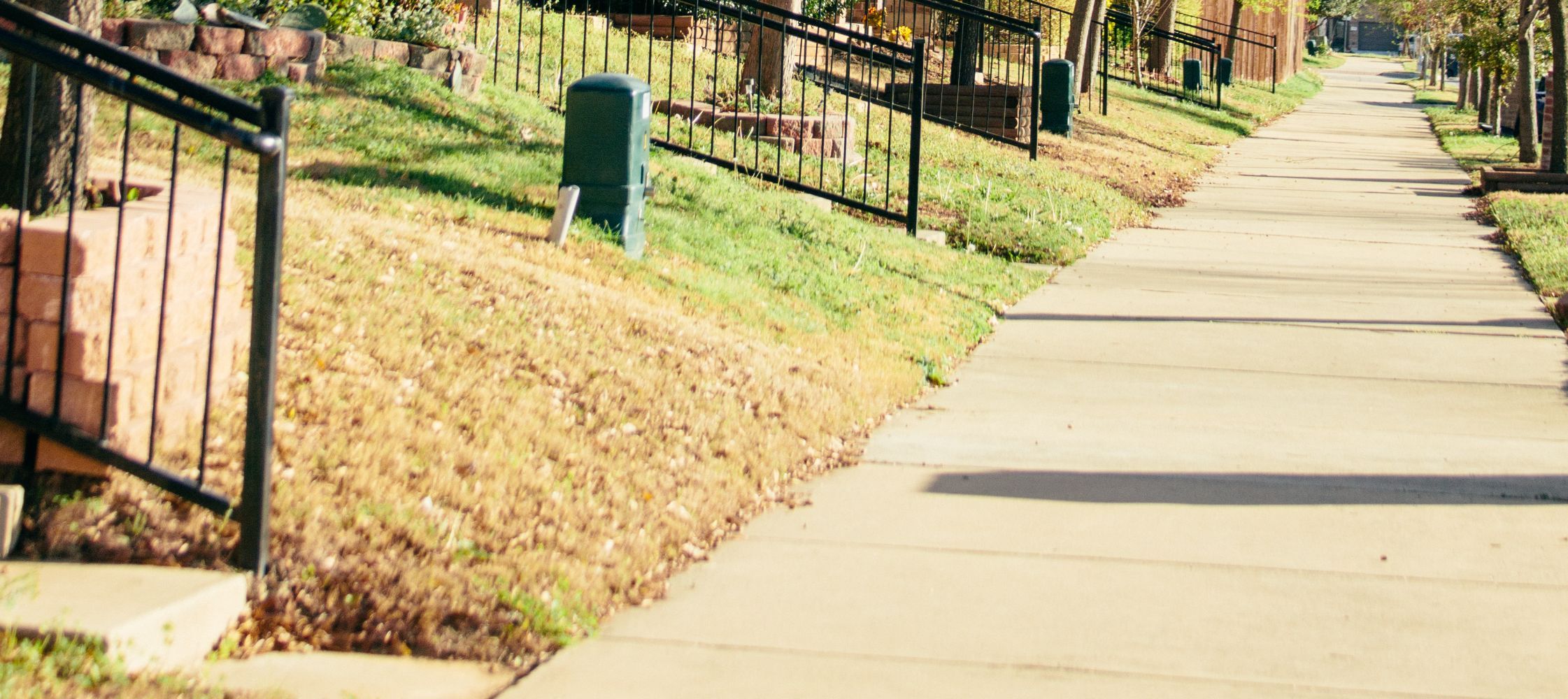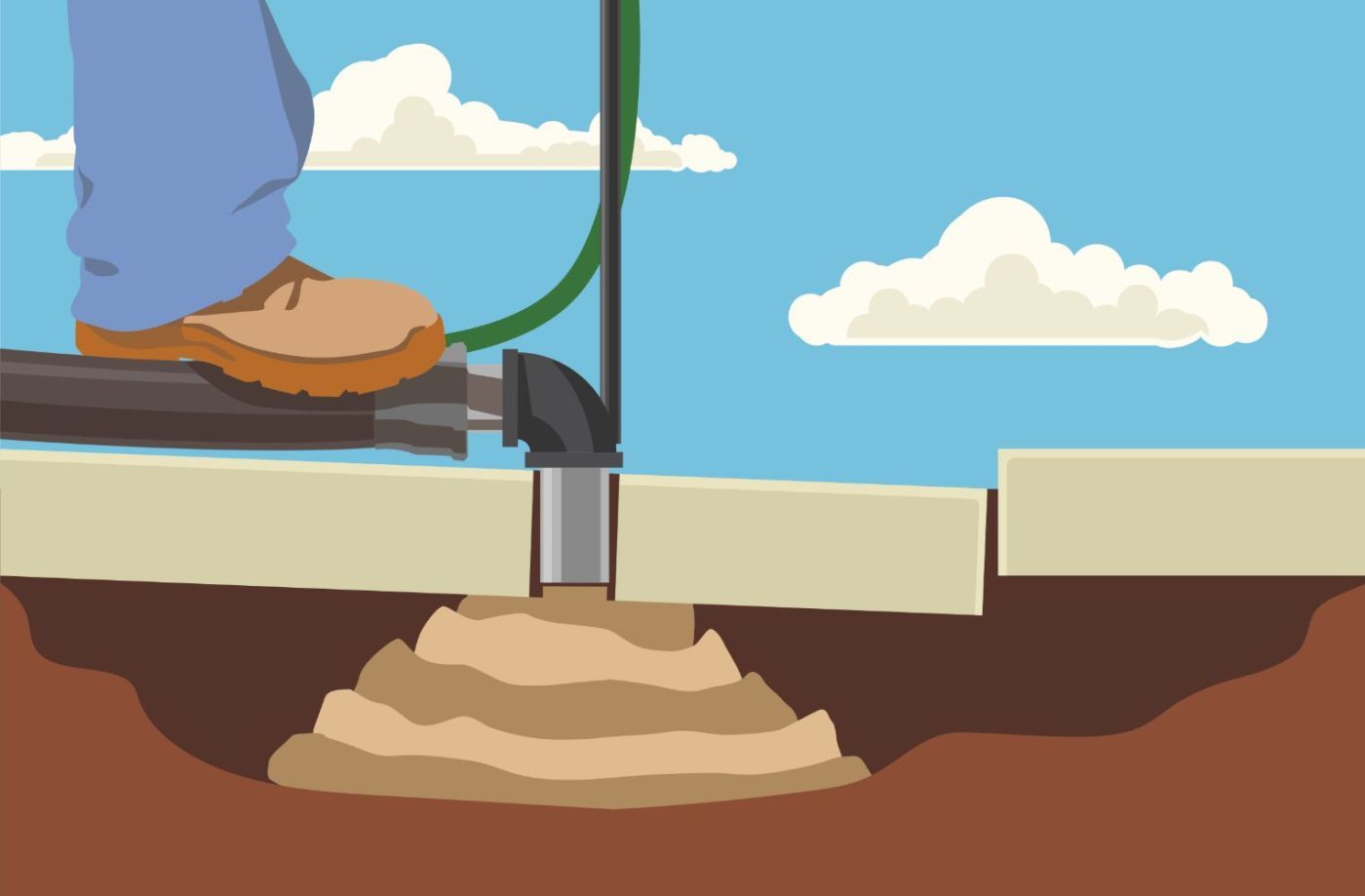
Discover why mudjacking can last for the entire life of your concrete.
Here’s the short answer: Mudjacking can last for the life of the concrete itself.
But the long answer? It can be a little more complicated than that, which is why we’re breaking it down for you in this article.
Here at A-1 Concrete Leveling, we’ve been in the concrete repair and maintenance industry for over 30 years.
While we don't technically provide mudjacking services ourselves (see the differences between mudjacking and our stone slurry grout leveling process), we’ve seen firsthand how other mudjacking repairs have stood the test of time.
In this article, we’ll explain why mudjacking lasts so long, dive into the factors that might make it last less time, and provide you with additional things to consider when it comes to mudjacking.
How Long Does Mudjacking Last?
Mudjacking can last for the life of the concrete itself (20-50+ years) if done correctly and properly maintained after the fact.
(The “done correctly” and “properly maintained” is the complicated part mentioned above. More on this next.)
Note: You’ll find a lot of anti-mudjacking / pro-foam leveling companies claiming that mudjacking will only last a few months to a few years. This is largely a scare tactic to turn people away from mudjacking and towards foam.
Here at A-1, we do stone slurry grout leveling in all locations and foam in some locations. While we don’t do mudjacking, we feel it’s still important to provide transparent, honest information about all concrete repair options, not just the ones we provide.
Why Mudjacking Lasts So Long
The reason concrete settles in the first place is due to soil erosion or natural soil settling that happens over time.
But as long as the soil has finished settling and/or the source of soil erosion has been eliminated, the mudjacking repair won’t sink or be eroded away. Instead, it will stay in place and support the slab.
Part of what determines if a mudjacking repair is done correctly is whether or not the team finds the source of erosion (and it’s eliminated) and/or determines that the soil has finished settling naturally.
Common Erosion Sources
Common sources of erosion that cause concrete leveling repairs, including mudjacking, to fail are:
- Water from downspouts or drainage washing away soil under the slab
- Gaps or cracks in the concrete allowing water to run under the slab
- Pests digging or burrowing in the soil under the slab
Related Resource: Why Concrete Leveling Repairs Fail
Maintaining Mudjacking Repairs
Like stone slurry grout leveling or polyjacking repairs, mudjacking needs to be maintained after the fact to prevent it from failing prematurely.
Here are some of the most important concrete leveling maintenance practices:
- Caulk cracks and joints
- Redirect downspout or drainage flow
- Fix leaky gutters
- Keep soil or landscaping levels even with the slab surface
- Prevent and manage pest infestations
Read More: How To Maintain Your Concrete Leveling Repair
Other Mudjacking Considerations
While mudjacking can last for the life of the concrete itself, there are some additional things to consider that may make it less ideal:
-
Improper Void Fill
Due to the higher pumping speed and pressure used during the mudjacking process, it can be hard to completely fill all the voids under the slab.
This can lead to pillars (or “pancake stacks”) of material in concentrated places under the concrete, which causes the slab to be weaker.
These pillars also leave open gaps under the slab that allow water to pass through more easily, which can erode away the repair and cause the slab to settle again.

-
Cracking
Due to the improper void fill, the slabs can sometimes be supported only by pillars, which can leave weak, unsupported areas.
This can lead to the slab cracking over time or when heavy weight is placed on the unsupported sections.
-
Larger Drill Holes
Larger drill holes are used during the mudjacking process to keep up with the higher pumping speed and pressure. These holes can be anywhere from 2 to 2.5 inches in diameter.
For reference, stone slurry grout leveling holes are around 1 inch in diameter, and foam concrete leveling holes are around 5/8 inches.
Mudjacking Alternatives
While mudjacking can be a great way to lift settled concrete back up to an even position, you may want to learn about these additional concrete leveling options:
-
Stone Slurry Grout Concrete Leveling
Stone slurry grout leveling is a concrete lifting technique that uses lower speed and pressure to pump a limestone slurry under settled concrete to lift it back up to the proper position.
Related Resource: The Pros & Cons of Stone Slurry Grout Concrete Leveling
-
Foam Concrete Lifting (Polyjacking)
Foam concrete leveling, also called “polyjacking,” is a newer form of concrete leveling that injects a chemical expanding foam under the concrete in order to lift it back up.
Related Resource: The Pros & Cons of Foam Concrete Leveling
Should You Mudjack Your Concrete?
At the end of the day, mudjacking is a durable repair option that can last the life of your concrete. But like anything, there are pros and cons to consider before choosing it as a repair option.
As mentioned above, you have other concrete leveling options to choose from, too. Check out these articles from A-1’s online resource library, Concrete Academy, to learn more:
- All About Stone Slurry Grout Leveling
- All About Polyjacking (Foam Concrete Leveling)
- Types of Concrete Leveling: Mud, Stone, and Foam Compared
A-1 Concrete Leveling doesn’t provide mudjacking services, but if you’re interested in seeing how stone slurry grout or foam leveling can restore your settled concrete, click the link below to request a free onsite cost estimate with an A-1 expert near you:
Click Here to Find Your Nearest Location and Receive a FREE Estimate
Sarah Etler joined A-1 Concrete Leveling after receiving her Bachelor of Arts degree in English from Northern Kentucky University. As A-1's Content Marketing Manager, she works closely with industry experts to produce content that will best answer questions related to concrete repair and maintenance practices. Sarah loves living a life full of discovery and is excited every day to see what new things she can learn and share with those around her.
Topics: